Exploring Ryokan-Style Rooms: Your Guide to Traditional Japanese Hospitality

If you have the opportunity to travel to Japan, we highly recommend staying in a traditional Japanese ryokan (旅館). The ryokan’s rooms, with their calm ambiance and intricate design, allow all visitors to truly immerse themselves in the beauty and traditions of Japan.
Features such as tatami-matted floors (畳), alcove decor (床の間), and the futon bedding (布団) that the staff lays out for you at night are the most common characteristics of a ryokan room. You too will relish the serene, harmonious space and the flow of relaxing time.
See also: What to Expect: Understanding the Manners of Japan’s Traditional Ryokans
What is a Traditional Japanese Room in a Ryokan Like?
Typically, the rooms in a ryokan are styled in traditional Japanese fashion, characterized by a distinctive flooring material called 'tatami (畳)’. Tatami mats are typically rectangular, covered with woven 'igusa (イグサ: rice straw)’ on the surface, with straw packed inside. The mats are edged with a band of cloth known as 'tatami-beri (畳縁)’, although edgeless tatami also exist.
Tatami is well-suited to Japan’s climate and lifestyle, offering high insulation and warmth, along with excellent moisture absorption and humidity control. The surface of the tatami is soft with a comfortable resilience, making it ideal for sitting, lying down, or laying out the futon bedding.
Moreover, the unique aroma and natural gentle color of the igusa offer a relaxation effect, which I also find to be one of the most pleasing scents. While some Japanese individuals may find this scent to be less appealing, it’s a rare occurrence.
Remember, one must not walk on these tatami mats with shoes on (in case you haven’t taken off your shoes at the ryokan entrance) or with slippers. Tatami is made of delicate materials, so care should be taken not to drag heavy objects or scratch the surface with sharp objects.
Tokonoma (床の間)
Usually, one corner of the room houses a 'tokonoma’ – a special space found in traditional Japanese houses and ryokan guest rooms.
The tokonoma often displays beautiful hanging scrolls (掛け軸: kakejiku), Ikebana (生け花)flower arrangements, seasonal decorations, and craftwork. It’s an inviting space meant for guests, but it’s also an exhibit – so you mustn’t place your luggage there or climb into it.
The tokonoma is there to enhance the formality and beauty of the room, creating a uniquely Japanese space where one can sense tranquility and refinement.
Low Table, Cushions, and Japanese Tea
On the tatami mat, you’ll find a low table (座卓: zataku), along with flat cushions (座布団: zabuton) and legless chairs (座椅子: zaisu). On the table, you’ll usually see a teapot (急須: kyuusu), tea leaves (茶葉: chaba), teacups (湯呑茶碗: yunomi-jawan), an electric kettle (電気ポット: denki-pot) or a thermos (魔法瓶: mahou-bin), and some Japanese sweets (和菓子/茶菓子:wagashi/chagashi). It’s similar to finding coffee and biscuits in a hotel room.
The staff member who showed you to your room might prepare some tea for you, or you can make it yourself and enjoy!
If you don’t see any tea utensils, they may be stored in a container called a 'chabitsu (茶びつ)’. In that case, keep an eye out for this type of container!

Rooms usually have a TV, air conditioning (or heater), and wifi. Most rooms have a telephone, but this is mostly used to make calls to the front desk or for domestic use in Japan. If you want to make an international call, look for a guide for that in your room or ask at the front desk for calling instructions and rates. Nowadays, if you have wifi, you should be able to keep in touch with your acquaintances in your country in some way.
Most rooms have a washroom and bath (shower), or, depending on the room grade, a private outdoor bath.
The toilet in the room often have their own slippers. Make sure you do not walk on the tatami mat wearing these slippers.
Also, be aware that loud noises can easily carry to neighboring rooms. Therefore, especially late at night or early in the morning, it’s best to stay calm and quiet.
If you have some time before dinner, you might enjoy sightseeing around the ryokan, visiting a public bath, or exploring the ryokan itself.



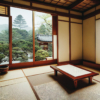
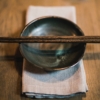
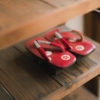

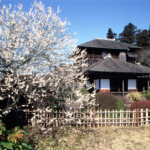

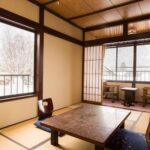
Discussion
New Comments
No comments yet. Be the first one!